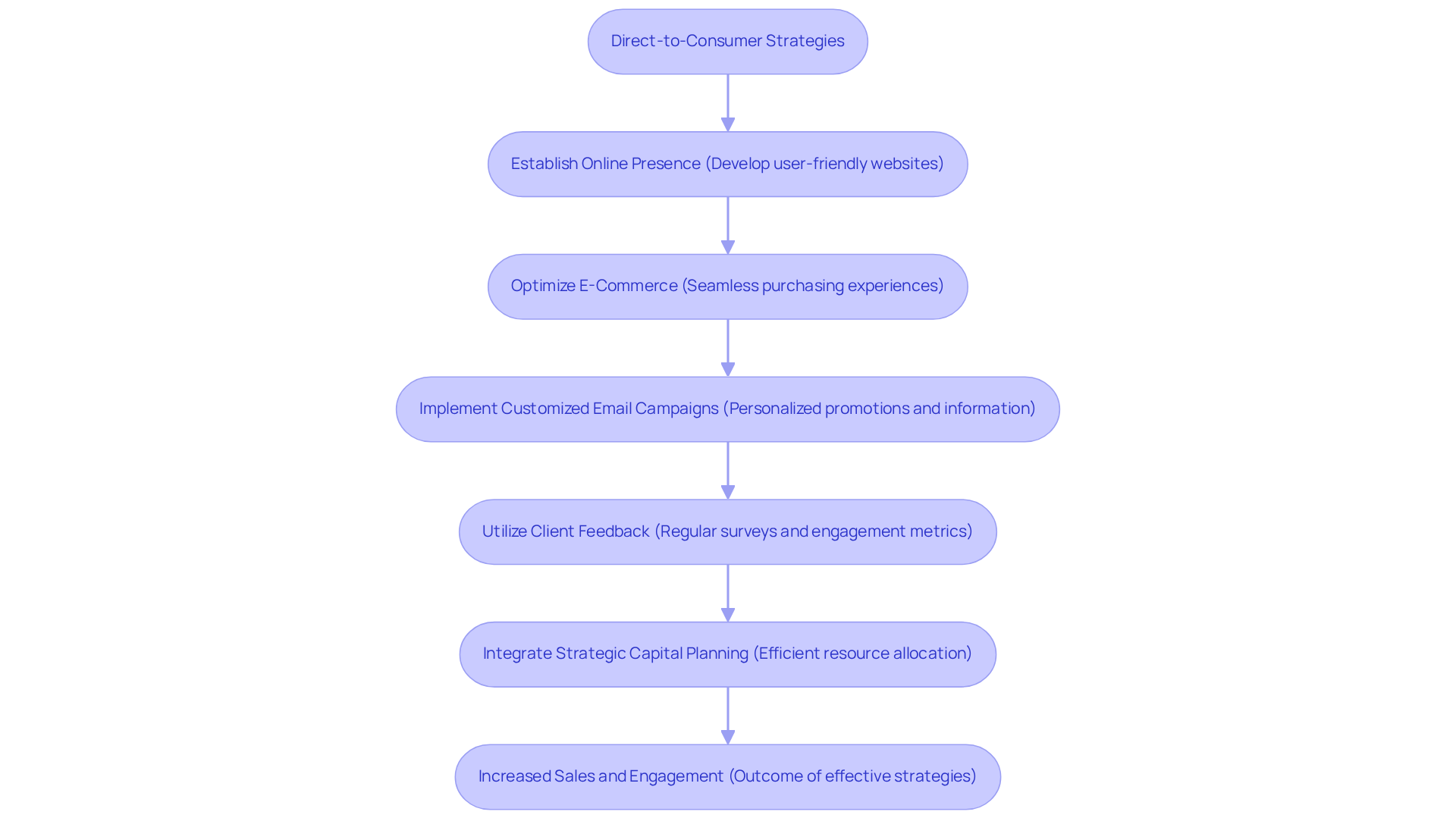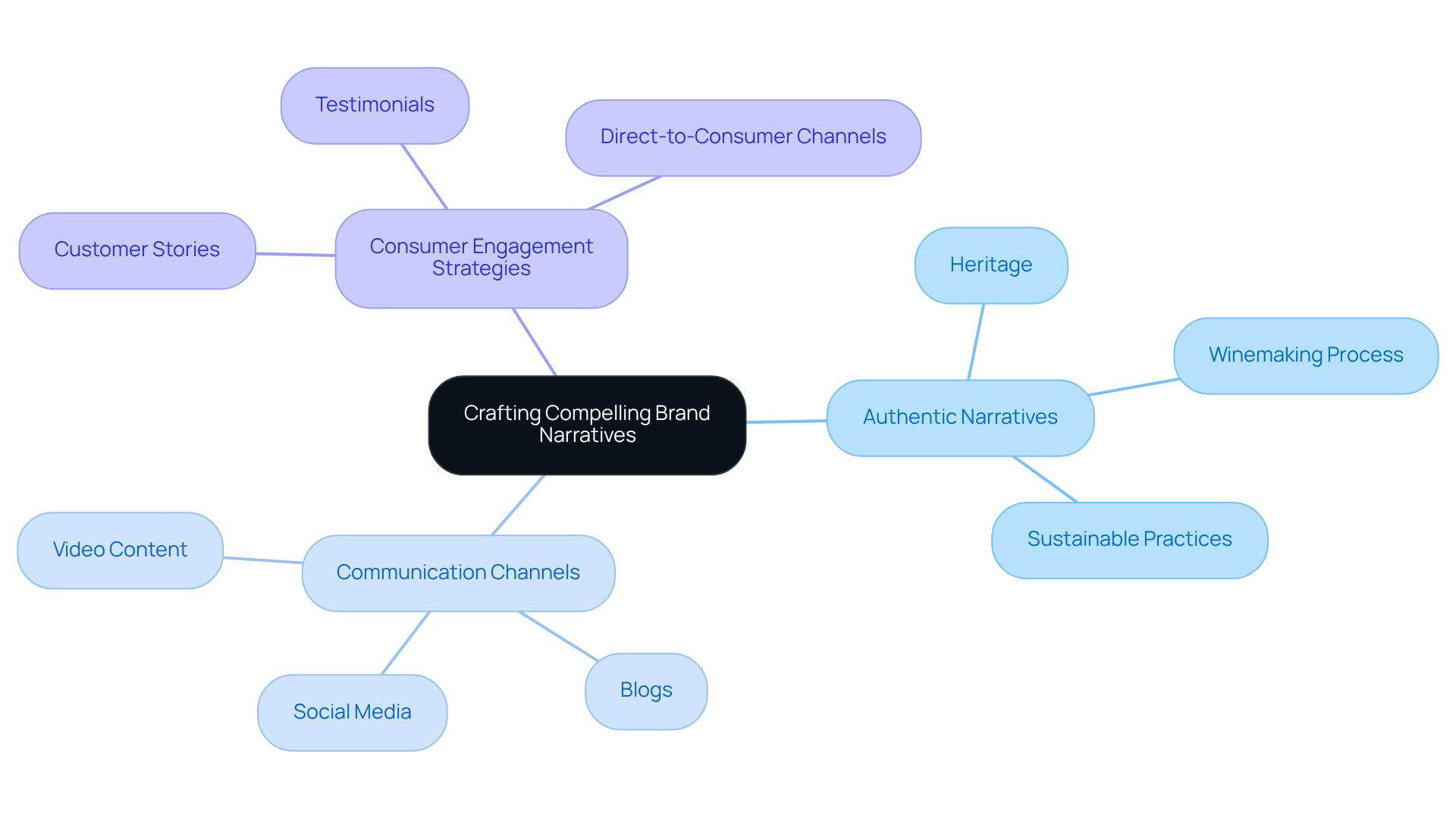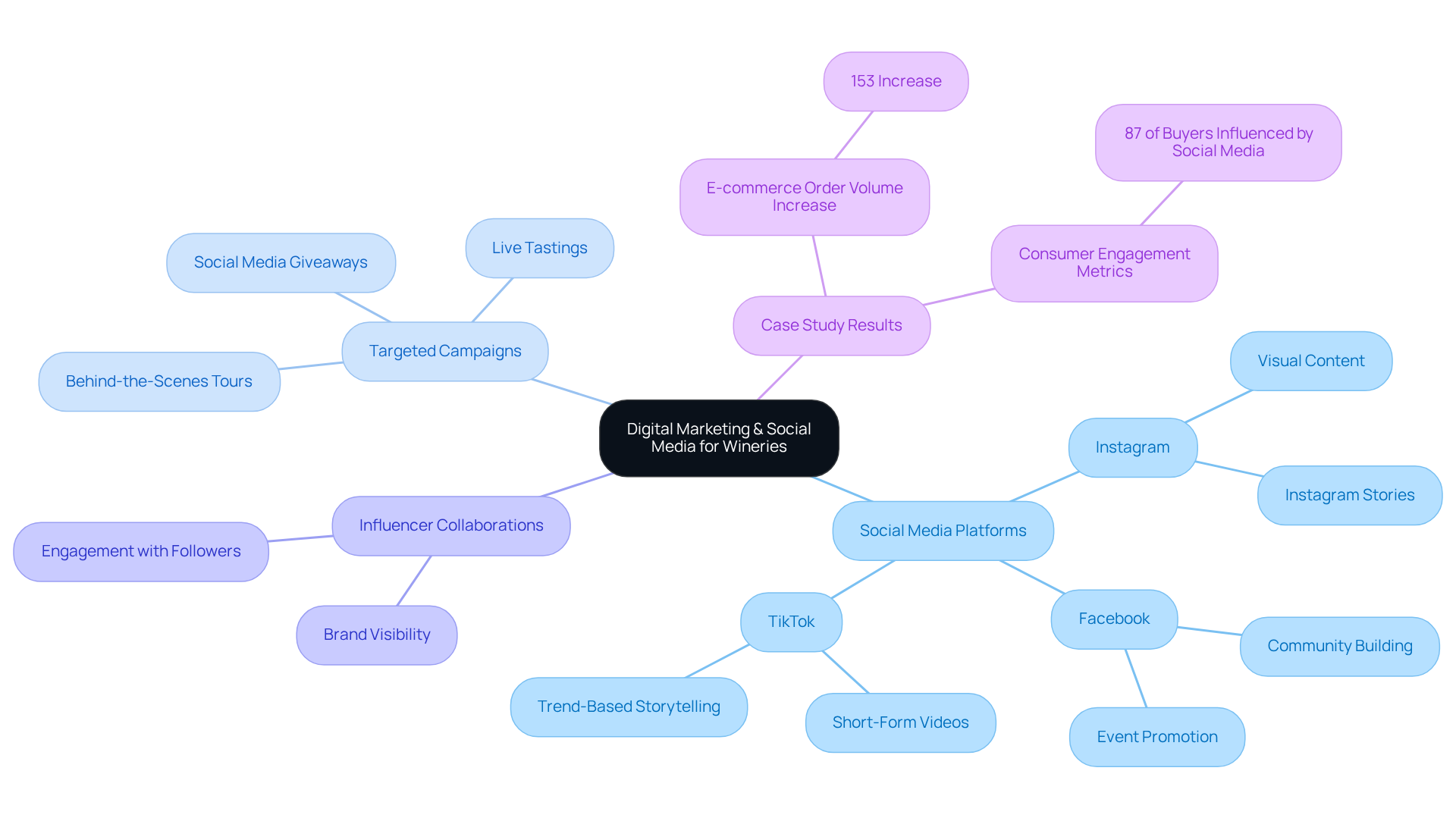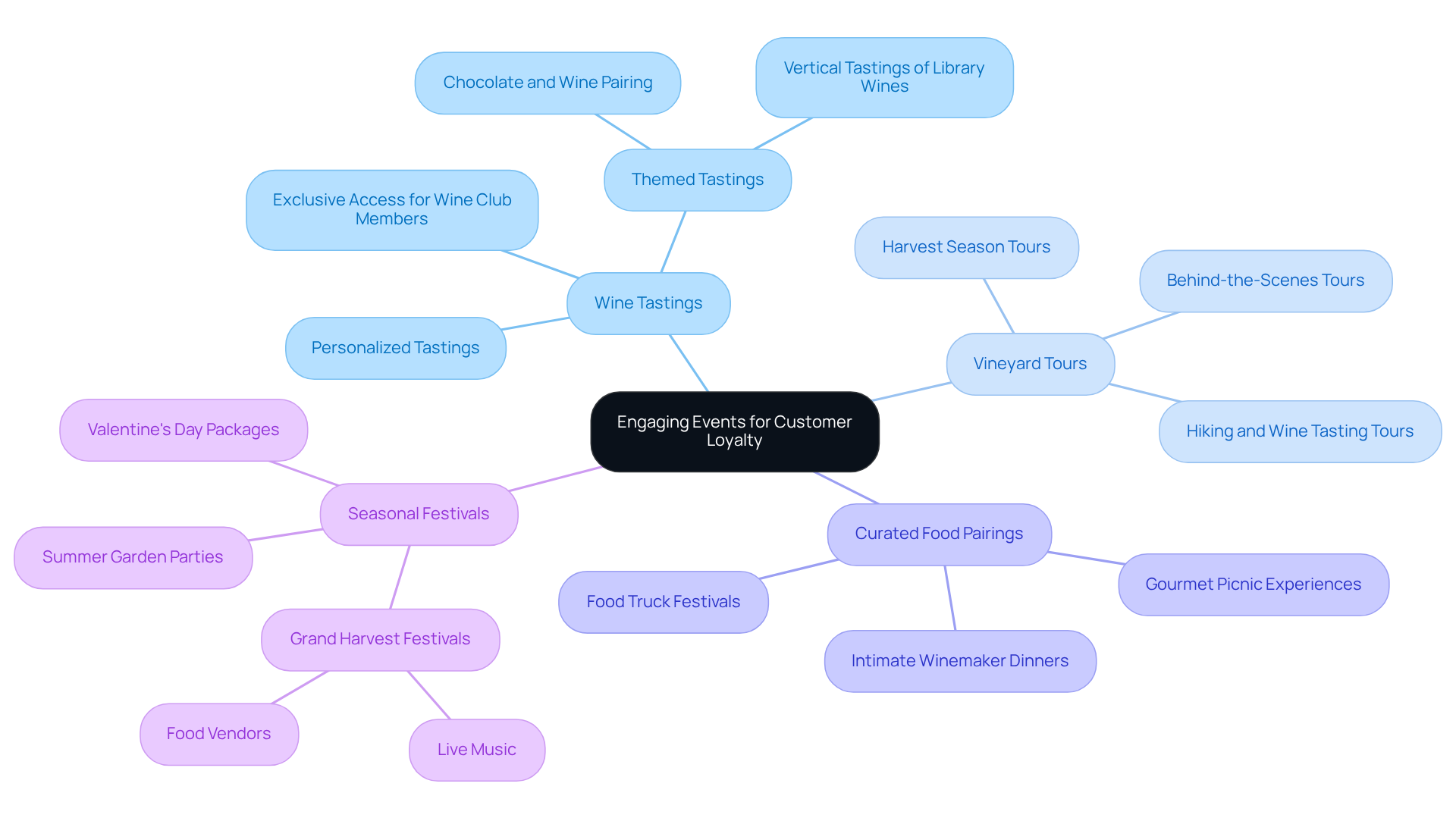Overview
This article delineates four proven strategies for achieving effective success in wine advertising. It underscores the significance of:
- Direct-to-consumer approaches
- Compelling brand narratives
- Digital marketing
- Engaging events
Each strategy is bolstered by examples and evidence, illustrating how these methods can markedly enhance customer engagement, foster loyalty, and ultimately drive sales growth for wineries.
Introduction
In a competitive landscape where consumer preferences are in constant flux, wineries encounter the formidable challenge of distinguishing themselves amidst the crowded realm of wine advertising. This article explores four proven strategies designed to significantly elevate a vineyard's marketing initiatives:
- Direct-to-consumer approaches
- Compelling brand narratives
- Digital marketing
- Engaging events
As wineries strive to forge deeper connections with their clientele, the pressing question arises: how can they effectively harness these strategies to not only amplify sales but also cultivate enduring loyalty among wine enthusiasts?
Leverage Direct-to-Consumer Strategies for Effective Advertising
To effectively harness direct-to-consumer (DTC) strategies, producers must prioritize establishing a robust online presence through an optimized e-commerce platform. This requires the development of that not only showcase products but also facilitate seamless purchasing experiences.
Customized email campaigns play a crucial role in connecting directly with clients, enabling vineyards to offer personalized promotions and information on new releases. By segmenting email lists according to consumer preferences and purchase history, wineries can deliver targeted messaging that resonates with individual buyers, transforming casual purchasers into loyal club members.
Furthermore, the utilization of client feedback and data analytics is essential for enhancing these strategies, ensuring that marketing efforts align with consumer interests and behaviors. Wineries can implement customer feedback by regularly surveying their audience and analyzing engagement metrics to adjust their offerings accordingly.
A notable success story illustrates this approach: a vineyard that enhanced its DTC strategy experienced a remarkable 191% increase in e-commerce sales, underscoring the significant impact of these tactics on revenue growth.
Additionally, integrating strategic capital planning into these efforts can enhance overall effectiveness, ensuring that resources are allocated efficiently to support growth initiatives. However, vineyards should remain vigilant against potential pitfalls, such as excessive segmentation in email outreach or neglecting the significance of an easy-to-navigate website.
By enhancing e-commerce and email marketing, along with strategic capital planning, vineyards can anticipate increased sales and greater client engagement.

Craft Compelling Brand Narratives to Engage Consumers
Wineries must prioritize the crafting of that embody their heritage, values, and the distinctive qualities of their wines. This can be effectively communicated through diverse channels such as social media, blogs, and video content. For instance, a vineyard might share the story of its founding family, detail the winemaking process, or highlight its sustainable practices. Engaging visuals and behind-the-scenes content significantly enhance these narratives, making them more relatable and memorable. A vineyard that embraced this approach experienced a substantial increase in consumer engagement and loyalty, as patrons developed a deeper connection to the label. Furthermore, including customer stories and testimonials enriches the narrative, highlighting the community surrounding the company and nurturing a sense of belonging among consumers. This strategy not only enhances customer loyalty but also establishes the vineyard as a relatable and reliable entity in a competitive market.
To further bolster these efforts, Enocap's strategic advisory services can assist wineries in:
- Building sustainable direct-to-consumer channels that drive consistent growth
- Securing the right capital for debt, equity, or acquisition opportunities
- Implementing proven strategies to transform casual buyers into loyal club members
By addressing these elements, wineries can enhance customer loyalty and position themselves as relatable and trustworthy entities in a competitive market. Notably, stories are up to 22 times more memorable than facts, underscoring the effectiveness of storytelling in marketing. Consistency in promoting the brand narrative across various channels is crucial for reinforcing the brand's story. While storytelling can be impactful, beverage producers should also remain mindful of potential drawbacks, such as the fear of vulnerability in discussing setbacks and challenges.

Utilize Digital Marketing and Social Media for Broader Reach
Wineries must actively engage on such as Instagram, Facebook, and TikTok, where visual content thrives. By crafting visually attractive posts that showcase the establishment's products, events, and vineyard scenery, wineries can draw in potential customers and convert casual buyers into devoted club members.
Furthermore, targeted campaigns in wine advertising on these platforms can effectively reach specific demographics interested in wine. For example, a vineyard could utilize Instagram Stories to showcase live tastings or behind-the-scenes tours, creating a sense of immediacy and excitement.
Collaborating with influencers in the wine industry for wine advertising can enhance reach, as these individuals can present the establishment to their followers, broadening the brand's visibility.
A compelling case study demonstrates that a vineyard effectively utilizing social media marketing achieved a remarkable 153% increase in e-commerce order volume, illustrating the potential benefits of a robust digital presence.
By implementing these transformative direct-to-consumer strategies, wine producers can build sustainable channels that drive consistent growth.

Host Engaging Events to Foster Customer Loyalty
Wineries must prioritize hosting a —such as wine tastings, vineyard tours, and curated food pairings—to engage visitors and create memorable experiences. These events not only highlight the establishment's offerings but also promote wine advertising by facilitating direct interactions with consumers, fostering personalized engagement.
Consider a seasonal harvest festival that features live music, food trucks, and exclusive wine tastings; such an event can attract both new and returning patrons. Moreover, introducing loyalty programs or offering exclusive access to events for wine club members can significantly enhance client retention.
A vineyard that organized a variety of engaging events reported a notable increase in return visits and client referrals, underscoring the effectiveness of wine advertising in cultivating brand loyalty. By crafting unique and engaging experiences, wineries can forge deeper connections with their customers, ultimately driving sustained growth and loyalty.

Conclusion
To achieve effective wine advertising success, wineries must adopt a multi-faceted approach that emphasizes direct-to-consumer strategies, compelling brand narratives, digital engagement, and memorable events. By focusing on these areas, wine producers can significantly enhance their market presence and foster lasting relationships with consumers.
Key strategies outlined include:
- Establishing a robust online platform for seamless purchasing experiences
- Crafting authentic narratives that resonate with customers
- Leveraging social media for broader outreach
- Hosting engaging events that promote personal connections
Each of these tactics not only drives sales but also cultivates brand loyalty, as evidenced by case studies highlighting substantial increases in e-commerce sales and customer engagement.
Ultimately, the significance of these strategies lies in their ability to transform casual buyers into devoted patrons. By embracing innovative marketing practices and prioritizing consumer experiences, wineries can secure a competitive edge in the industry. The call to action is clear: investing in these proven methods will not only enhance brand visibility but also foster a community of loyal customers, ensuring long-term growth and success in the dynamic landscape of wine marketing.
Frequently Asked Questions
What are direct-to-consumer (DTC) strategies in advertising?
DTC strategies involve producers connecting directly with consumers to enhance marketing efforts, primarily through an optimized online presence and e-commerce platforms.
Why is having a robust online presence important for producers?
A robust online presence allows producers to showcase their products effectively and facilitate seamless purchasing experiences for consumers.
How can customized email campaigns benefit wineries?
Customized email campaigns enable wineries to connect directly with clients, offering personalized promotions and information about new releases, which helps transform casual purchasers into loyal club members.
What is the significance of segmenting email lists for wineries?
Segmenting email lists based on consumer preferences and purchase history allows wineries to deliver targeted messaging that resonates with individual buyers, enhancing engagement and loyalty.
How can wineries utilize client feedback and data analytics?
Wineries can enhance their DTC strategies by regularly surveying their audience and analyzing engagement metrics to align marketing efforts with consumer interests and behaviors.
Can you provide an example of a successful DTC strategy?
A vineyard that improved its DTC strategy experienced a 191% increase in e-commerce sales, demonstrating the effectiveness of these tactics on revenue growth.
What role does strategic capital planning play in DTC strategies?
Strategic capital planning helps enhance the effectiveness of DTC efforts by ensuring resources are allocated efficiently to support growth initiatives.
What potential pitfalls should vineyards be aware of when implementing DTC strategies?
Vineyards should be cautious of excessive segmentation in email outreach and the importance of maintaining an easy-to-navigate website to avoid alienating potential customers.
What overall benefits can wineries expect from enhancing e-commerce and email marketing?
By improving e-commerce and email marketing, along with strategic capital planning, wineries can anticipate increased sales and greater client engagement.




